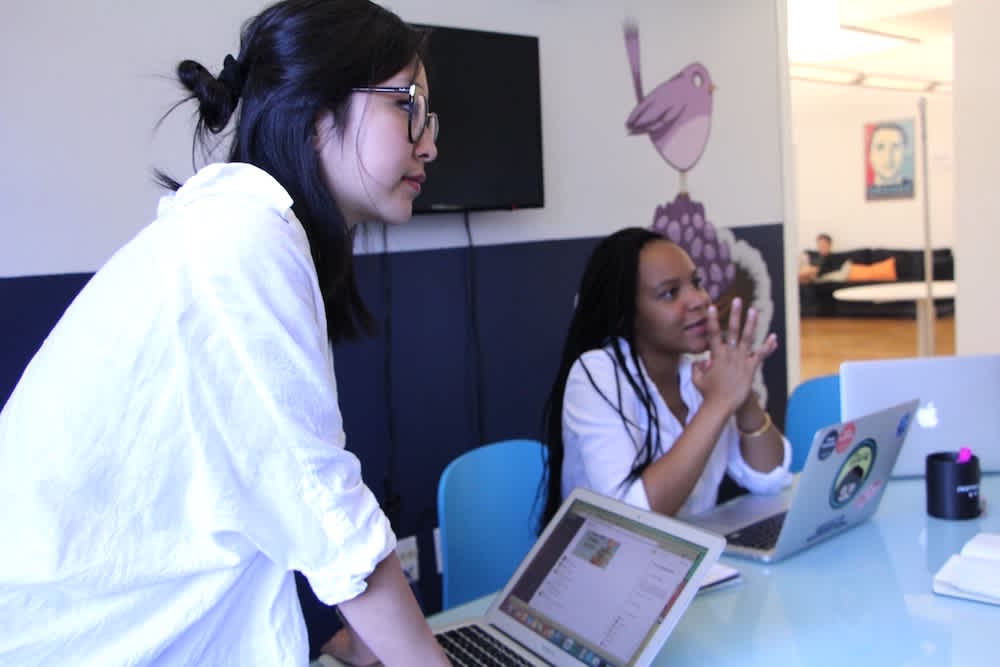If parenting wasn’t already difficult enough, we’re now in a time when working from home is standard. As we continue working remotely, parents are faced with more challenges when it comes to caring for themselves and their families.
If you’re one of many working parents who take on daycare responsibilities, we know the struggles you’re going through. Check out our list of tips, tricks, strategies, and resources that may help you find your footing as you wear all the hats at home.
Having enough hands
Parents know all too well the value of an extra hand, and now is the time you need all the hands you can get. What if you’re not sure where to find them?
The people in your household are likely your most convenient resources. It might take some coordination, but trading kid duty with your spouse, partner, parents, or older children can help ensure the kids are cared for and you have the time and energy to get some work done.
If coordinating with your family isn’t working out, or you don’t have other childcare resources to rely on, you still have options for keeping your kids engaged and cared for. Don’t be afraid to try something different:
Wear your baby. Lots of parents use carriers like the Baby Bjorn to allow them more freedom while keeping their baby safe. If nothing else, you’ll free up your hands by strapping your little one in for the day.
Check out live and recorded storytime. Many videos and streaming events are popping up online that feature people reading children’s books, making it an easy resource to use for keeping younger children occupied. Try Oliver Jeffers' Instagram account to start with.
Brighten the day with some color. Even if your kids own coloring books, having different subject matter will make the activity new and engaging. Sites like Get Coloring Pages offer free pages you can print at home.
Listen to podcasts geared toward children. Another alternative to reading books in real life, this is another good option for keeping kids occupied and engaged. The Story Pirates, The Past and The Curious, and Stories Podcast are all popular options on Spotify and Apple Podcasts.
Let the kids help cook dinner. Having a “family cooking class” will not only provide you with an extra set of hands, but your kids will also be engaged and will learn how to do more in the kitchen! Try Sally’s Baking Addiction for kid-friendly recipes.
Plan for no-hands time in advance. If you know you’ll find yourself stuck with a sleeping baby on one arm, ensure all your work is accessible from your phone. The Google Docs app is great for this.
Don’t shy away from screentime. It’s not a reasonable expectation that you’ll actively care for kids every second of every day. Give yourself a break and let your children get wrapped up in their favorite movie or television show for a bit (bonus if it’s educational). You’ll all benefit from some low-key, hands-off activities that keep kids busy. Mr. Rogers Neighborhood, Snoopy in Space, Pete the Cat, and Sesame Street are all popular choices.
If you’re still struggling to perform double duty as a parent and professional, don’t worry. Sometimes we’ll need to rely on what’s easiest to get through the day.
Keeping a tight(ish) schedule
Many schools of thought support the idea of maintaining a regular schedule for children (and adults). A consistent routine can provide some much-needed structure, and it can also help maintain stable moods, improve one’s ability to interact and build relationships with others, and develop a sense of responsibility. And when kids are following their schedules, parents are better able to keep theirs!
If you’ve found it tough to keep your kids on track, check out some of these options and resources:
Create your own family schedule. A schedule that’s unique to your own family’s needs will work much better than a generic one. But don’t be afraid to use any examples you find — they’ll give you a framework you can then adjust to your needs. This widely shared block example provides a great base for structuring the day.
Make it a game. Even if your kids have online classes or a schedule to follow, they’re not always going to want to follow along. Consider making a game out of how long your child can stay in their seat or how many sheets of paper they can fill up.
Offer your child choices. This can be effective for toddlers as well as grade school-aged kids who are capable of more autonomy. By offering up a choice between two options, you’re maintaining structure and control of what they’ll be doing. Having the choice will make your kids feel more responsible and more committed to following up on their decision.
Align your day to your energy levels. We all have our own rhythms in terms of when we feel most energetic and productive, so consider a schedule that works with that rhythm instead of against it. This goes for kids too! If you can afford to put some time in upfront to develop this type of schedule, you may find you and your kids being more productive and focused throughout the day.
At the end of the day, every child is unique and requires different things to learn. Try a combination of these ideas or try none at all — as long as you’re providing your kids with a few activities that will spark curiosity and learning, they’ll get through this situation having grown (and you will too).
Getting the work done
Caring for your child while working remotely can be really tough. You might be trying to figure out how to balance these responsibilities, which is a unique challenge in itself.
With so many parents struggling with this, more ideas and strategies are being shared to help mothers and fathers everywhere find that ever-elusive balance:
Use your time wisely. Aim to tackle the things that require the most focus when your kids are heavily occupied. While everyone’s kids won’t be occupied for long stretches of time, use what blocks you can to get the work done. You’ll save yourself the frustration later on in the day when your kids are restless and you’ve got a deadline.
Get into a groove with some atypical tunes. Using music is a common strategy for productivity and one we’ve pointed out in a previous article, but try shaking it up with some less obvious choices. Your children likely have a favorite album that’s played nonstop (like Pete the Cat’s soundtrack), leading to the same earworm you find yourself humming unconsciously. See how much work you can churn out (and how well your kids are occupied) by playing that album in the background!
Consider dictation apps. When you’re sprinting to rescue that vase before your child knocks it to the floor, you might lose that thought you were just about to jot down. Avoid losing your thoughts to rescue missions by keeping a dictation app like Transcribe open on your phone. This can help you maintain a semi-productive workday if you anticipate having to jump up for multiple rescue missions throughout the day.
Speak with your employer about flexible work. Especially in times like these, parents may find it much easier to focus when their children are sleeping. If your employer allows you to work flexible hours, this may allow you to spend time working in the evenings once your children are down for the night.
Be realistic about your workload. Getting through the day can be hard enough when you’re in the office. Add in working from home, and you’ve got yourself quite a situation. Recognize that you’re one person with a lot on your shoulders and that it’s okay if you don’t check off every item on your to-do list.
If you’re still struggling with your workload, don’t hesitate to discuss your concerns with your manager. You’re likely not the only one in your company that’s struggling. Opening up to your employer will enable them to help you find a solution that works for your situation.
It’s more important than ever to show kindness and patience toward ourselves. Doing so will make it that much easier to come through on the other side of each day stronger than we were before. You’ve got this!
Learn more with Justworks’ Resources
Scale your business and build your team — no matter which way it grows. Access the tools, perks, and resources to help you stay compliant and grow in all 50 states.







